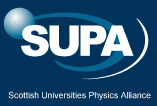

Dr Maxime J. Jacquet
A little bit over a hundred years ago, in 1915, Albert Einstein revolutionised our understanding of the Universe by proposing the theory of general relativity. A few years later, a handful of brilliant scientists built on Planck’s quantum principle and Heisenberg’s uncertainty principle to develop the other principal physical theory of the 20th century: quantum mechanics. This body of physical laws govern the realm of the very small, such as atoms and their constituents. On the other hand, general relativity is associated with the large scales of the Cosmos. Because of the vastly different scales over which they are valid, these theories are notoriously difficult to combine without arriving at paradoxes. Tying general relativity to quantum mechanics on equal length scales remains one the outstanding, and most pressing, challenges of Physics at the dawn of the 21st century – we still do not know which theory would emerge from this endeavour. Black holes are widely thought to combine both sides, and are thus considered to be benchmark for future theories of quantum gravity.
General relativity explains the force of gravity in terms of the curvature of a four-dimensional spacetime. Only a few months after Einstein had proposed his equations, Schwarzschild found a solution for the deformation of spacetime around a spherical body. It was soon realised that, according to Schwarzschild’s solution, the gravitational field in the vicinity of a point mass would be strong enough to deform the spacetime such that all particles and light would be captured! The edge of the black hole – the boundary from which it is not possible to escape to infinity – is called the event horizon. According to general relativity, outside the horizon the object is “black”, it does not emit. This is a black hole.
In 1974, Hawking painted a rather brighter picture of black holes. In a ground breaking paper, he showed that a quantum effect would lead to the emission of particles from the horizon. Black holes are not completely black: they emit “Hawking radiation”! This emission comes at the expense of the black hole’s energy, or mass, and leads to “black hole evaporation”. This effect illustrates the fact that quantum mechanics and general relativity come together at the horizon of black holes. However, this prediction has not been experimentally verified. As it turns out, Hawking radiation is so weak that it is drown out by the Universe’s own glow, the cosmic microwave background.
Fortunately, the equations that describe the curvature of spacetime at the horizon are very general and happen to be useful in other physical systems than the gravitational context in which they were discovered. In 1981, Bill Unruh showed that a fluid flow of water can simulate an event horizon. Crucially, such “analogue horizons” emit Hawking radiation just like their astrophysical counterpart. This demonstrates that certain features of black hole physics can be reproduced in a variety of laboratory systems, from Bose-Einstein condensates to polariton condensates or nonlinear optics. This finally brings the detection of the elusive Hawking radiation within reach.
In 2008, Ulf Leonhardt and Friedrich König (Maxime’s PhD supervisor) proposed a promising scheme to observe Hawking radiation: they demonstrated the creation of analogue horizons in optics, and showed that these should lead to the highest expected particle emission rate, the highest effective temperature and, importantly, no thermal background. Maxime’s thesis is devoted to this elegant variant of analogue gravity physics. It presents all the arguments necessary to understand the science of horizons, and the experimental realisation of “optical horizons”. The thesis then introduces a quantum description of light scattering at the optical horizon. Surprisingly, it is found that other regimes of spacetime curvature can also be realised in optics. An analytical method to calculate the quantum emission in all regimes of spacetime curvature is presented, and, based on this, realistic emission spectra are computed. This mathematical treatment, together with the spectra, provide unprecedented insight into the phenomenon of Hawking radiation from optical horizons. Maxime also approached the problem experimentally. The thesis presents measurements of new-fangled sensitivity in the search for the stimulation of the Hawking effect at optical horizons. Maxime’s work shed light on intricate aspects of analogue gravity physics, and rendered Hawking radiation more tangible.



